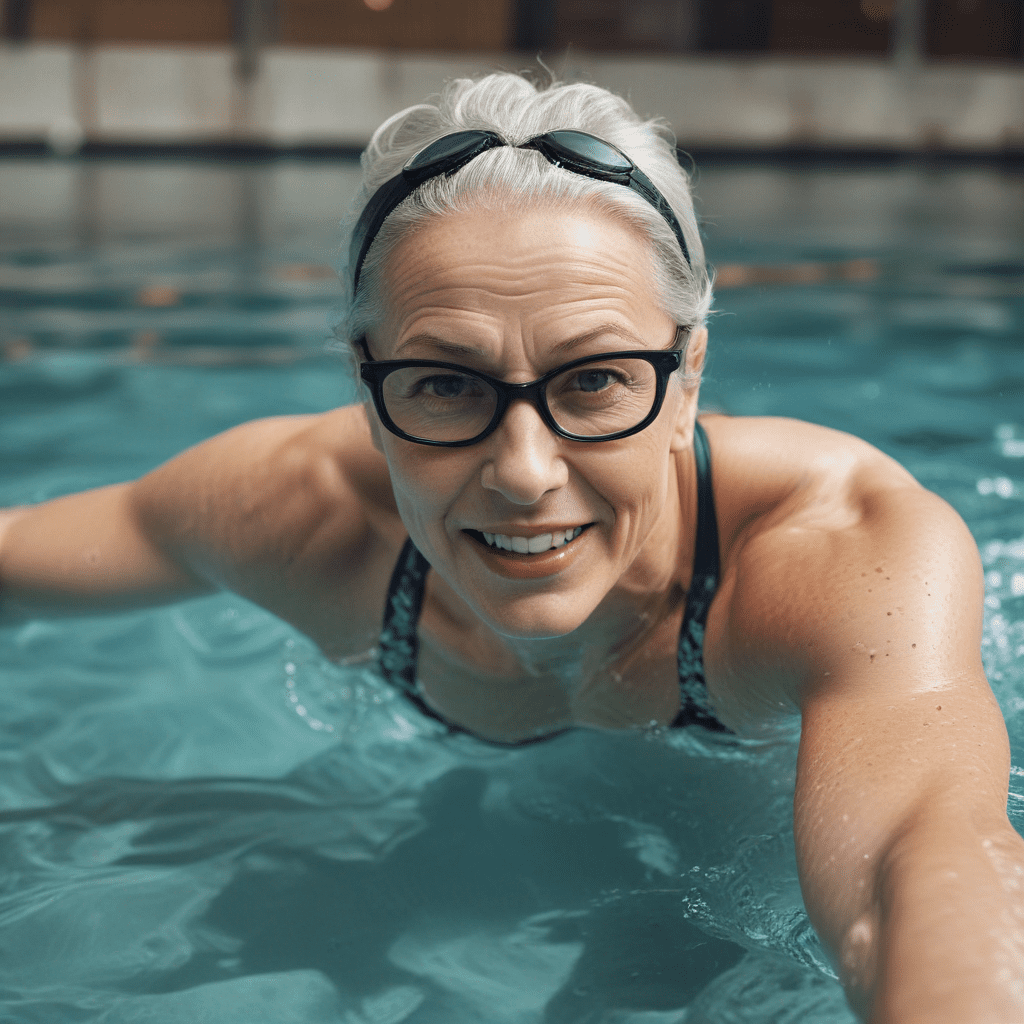
Introduction: The Importance of Exercise for Seniors
As we age, it becomes increasingly important to maintain an active and healthy lifestyle. Regular exercise offers numerous benefits for seniors, including improved physical and mental health, increased mobility, and enhanced quality of life. Swimming is an excellent form of exercise for seniors as it provides a low-impact, full-body workout.
Benefits of Swimming for Seniors
Swimming offers a wide range of benefits for seniors, both physically and mentally. It helps to strengthen muscles and improve flexibility, which can help to reduce pain and stiffness. Swimming also improves cardiovascular health, lowers blood pressure, and helps to maintain a healthy weight. Additionally, swimming is a relaxing and enjoyable activity that can help to relieve stress and improve mood.
Choosing the Right Swimming Program
When choosing a swimming program for seniors, it is important to consider individual needs and abilities. Look for programs that offer classes tailored specifically for seniors, with a focus on safety and comfort. Consider the pool temperature, water depth, and class size when making a decision. It is also important to consult with a healthcare professional before starting a new exercise program, especially if you have any underlying health conditions.
Getting Started Safely
Safety is paramount when swimming for seniors. Start slowly and gradually increase the intensity and duration of your workouts over time. Always warm up before swimming and cool down afterwards. Use proper swimming techniques to avoid strain or injury. Consider using flotation devices such as swim belts or noodles for added support. It is also important to swim in a supervised environment and to have a buddy present for safety.
Swimming Techniques for Seniors
There are several swimming techniques that are particularly suitable for seniors. The front crawl, backstroke, and breaststroke are all low-impact strokes that can be modified to accommodate individual needs and abilities. It is important to focus on proper form and technique to ensure safety and maximize the benefits of swimming.
Exercises in the Water
Swimming provides an excellent platform for performing various exercises in the water. These exercises can help to improve flexibility, strength, and balance. Some examples include:
- Water walking: Walking in the water is a great way to improve cardiovascular health without putting stress on the joints.
- Water aerobics: Water aerobics classes offer a wide range of exercises that can be modified to suit different fitness levels.
- Resistance training: Using flotation devices such as water dumbbells or resistance bands can add resistance to swimming exercises, helping to build strength.
Safety Precautions for Senior Swimmers
Safety is crucial for senior swimmers. Here are some precautions to keep in mind:
- Avoid swimming alone: Always swim with a buddy for safety.
- Wear appropriate swimwear: Wear a swimsuit that fits well and allows for freedom of movement.
- Be aware of your surroundings: Pay attention to other swimmers and avoid crowded areas.
- Stay hydrated: Drink plenty of water before, during, and after swimming.
- Listen to your body: Stop swimming if you feel tired or experience any pain.
Social Benefits of Swimming for Seniors
Swimming is not just a physical activity; it also offers social benefits for seniors. Group swimming classes and water aerobics programs provide opportunities to connect with others, make new friends, and reduce feelings of isolation.
Swimming and Chronic Conditions
Swimming can be beneficial for seniors with chronic conditions such as arthritis, osteoporosis, and heart disease. The buoyancy of water helps to reduce stress on the joints, making it a safe and effective form of exercise for these conditions. Swimming can also improve cardiovascular health, lower blood pressure, and increase flexibility.
Conclusion: Enhancing Senior Well-being through Swimming
Swimming offers numerous benefits for seniors, both physically and mentally. It is a low-impact, full-body workout that can help to improve cardiovascular health, strengthen muscles, increase flexibility, and reduce pain and stiffness. Swimming also provides social opportunities and can improve mood. By incorporating swimming into their routines, seniors can enhance their overall well-being and live healthier, more active lives.
FAQ
Q: Is swimming safe for seniors?
A: Yes, swimming is a safe and beneficial form of exercise for seniors. It is low-impact and can be modified to suit individual needs and abilities.
Q: What are the benefits of swimming for seniors?
A: Swimming offers numerous benefits for seniors, including improved cardiovascular health, increased flexibility, reduced pain and stiffness, and enhanced social opportunities.
Q: How do I choose the right swimming program for seniors?
A: Look for programs tailored specifically for seniors, with a focus on safety and comfort. Consider the pool temperature, water depth, and class size when making a decision.
Q: What are the safety precautions for senior swimmers?
A: Always swim with a buddy, wear appropriate swimwear, be aware of your surroundings, stay hydrated, and listen to your body.

